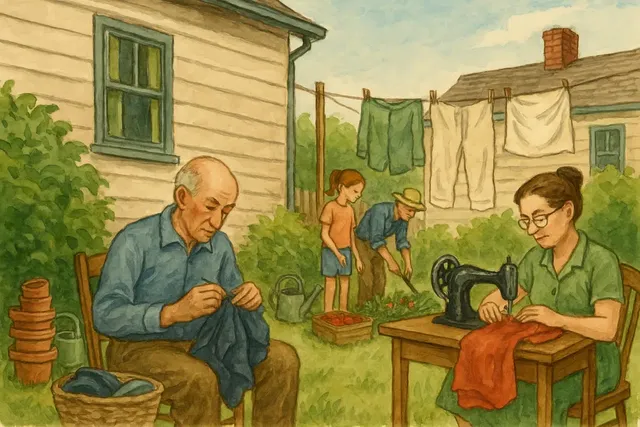13 Old-Fashioned Frugal Living Habits From the Greatest Generation
Betty Smith’s 1943 classic A Tree Grows in Brooklyn opens with eleven-year-old Francie Nolan lugging a sack of scrap metal and rags to the neighborhood junk dealer. The payout—pennies, never a about usnickels—goes straight into the tin-can bank her mother has nailed inside a closet. Week after week that slow, disciplined trickle buys schoolbooks, winter coal, and eventually the modest breathing room that lets the Nolans rise above bare survival. What looks like hardship is really the system: mend, reuse, share, record, and save until the small becomes substantial.
The real Greatest Generation—both the families who stayed stateside and the soldiers who came home—ran on their own versions of Francie’s ritual. Frugality wasn’t the lifestyle brand that it’s become today, but was the playbook that turned scarcity into security and, later, prosperity. The not dozen or so habits that follow dust off that playbook for the twenty-first century. They’re practical, sometimes quirky, and still relevant—because the math of the waste and the logic of restraint haven’t changed since Francie a counted those hard-earned pennies.
Start a mend-it-before-you-replace-it “Saturday Fix” ritual. Block one hour each weekend for triage: lay out the broken zipper, the wobbly chair, the frayed charging cable, and tackle them in order of a easiest repair. Keep a basic kit him stocked with everything you might need—needle and thread, wood glue, electrical tape—so starting doesn’t require a trip to the store. Over time your ’ll build skill, confidence, and a backlog of avoided purchases. Importantly, the ritual trains your mind to ask “How do I therestore?” before “What do I buy?” and that shift compounds into real savings.
